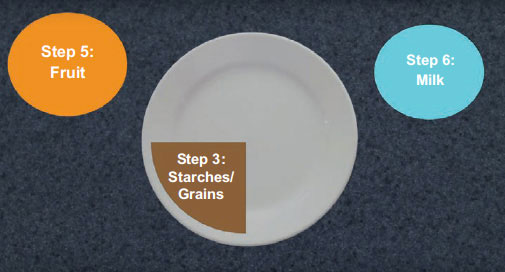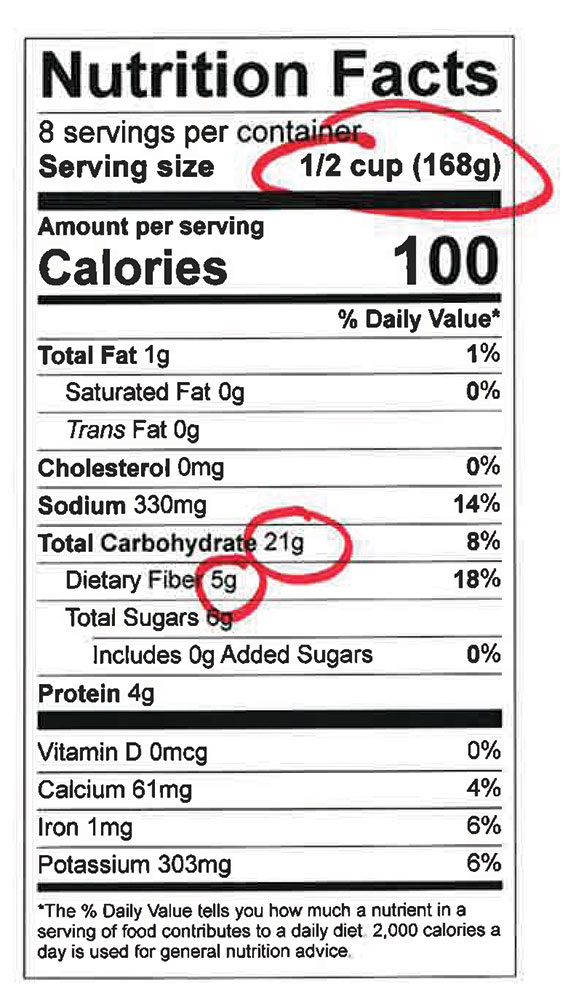Bulletin #4364, Dining with Diabetes: A for A1C: Carbohydrates and Blood Sugar
Bulletin #4364, Dining with Diabetes: A for A1C: Carbohydrates and Blood Sugar (PDF)
Developed by Alan Majka, Associate Extension Professor/Educator, University of Maine Cooperative Extension.
Reviewed by Kate Yerxa, Associate Extension Professor, University of Maine Cooperative Extension.
For information about UMaine Extension programs and resources, visit extension.umaine.edu.
Find more of our publications and books at extension.umaine.edu/publications/.
Blood sugar control is an important component of diabetes management. You can reduce your risk for diabetes complications by consistently maintaining blood sugar within a healthy range. A test of blood sugar only indicates what your blood sugar level is for the moment of time. But a blood test called Hemoglobin A1C, often shortened to just A1C, reveals how well your blood sugar has been controlled over the past three months. While you and your health care provider may set an individualized goal based on your unique needs, a reasonable A1C goal for most non-pregnant adults is less than seven percent.
You can maintain healthy blood sugar levels by losing excess body weight, participating in daily physical activity, taking prescribed medications, and limiting the amount of dietary carbohydrate consumed at a time by using the Plate Method.
Food carbohydrates include complex carbohydrates, sometimes called starches, sugars, and fiber. Both starches and sugars are digested and absorbed into the body where they become blood sugar. Anyone who has experienced a low blood sugar level will tell you some blood sugar is necessary. However, when too much carbohydrate is consumed at once, blood sugars become too high. Some carbohydrate-containing foods and beverages are needed to keep blood sugar from becoming too low and to provide essential nutrients. Fiber is a kind of carbohydrate that has many health benefits yet does not affect blood sugar because fiber isn’t digested and absorbed into the body.
Three of the Plate Method food groups include foods containing carbohydrates that affect blood sugar:
- starchy vegetables/grains,
- fruit, and
- milk groups.
The first fact sheet in the Dining with Diabetes series, University of Maine Cooperative Extension bulletin #4363, Meal Planning Using the Plate Method, lists foods found in each of these groups. Portion sizes are controlled through use of the recommended size dishes, how foods are placed on the dishes, and for some items, portion details on food lists. Women should include a serving of starchy vegetables or grain, a serving of fruit, and a serving of milk in every breakfast, lunch and supper meal. Men can include one additional serving from one of these groups in each meal. Snacks should include no more than a single serving of carbohydrate-containing food.
Carbohydrate Trading

Each serving from the starchy vegetables/grains, fruit and dairy food groups contains about 15 grams of carbohydrate. Therefore, a meal for a woman contains approximately 45 grams of carbohydrate, and a meal for a man contains about 60 grams. It’s best to select items from each of the food groups because each food group provides important nutrients. However, you can include an extra serving from one of the carbohydrate-containing food groups if you eliminate a serving from one of the other carbohydrate-containing food groups. You may trade a serving from one group for a serving from another. For example, you could have an extra serving of potato instead of a serving of fruit in a meal.
Sweets
If your blood sugar is under good control, you may occasionally substitute a food containing added sugar for foods in the carbohydrate-containing food groups. For example, since a two-inch cube of iced cake contains about 30 grams of carbohydrate, you can substitute it for of a serving of fruit and a serving of bread. Just remember that sweets don’t provide the same nutrients and they are often very high in calories and unhealthy fats.
Label Reading
You can use the Nutrition Facts panel on a food label to determine how much carbohydrate it contains. First, be sure to find the serving size for that food. Then look for the number of grams of carbohydrate in the serving. This includes starch, sugar, and fiber. Grams of fiber may be subtracted from the total grams of carbohydrate because fiber is not digested and absorbed. Every 15 grams of carbohydrate counts as one carbohydrate serving, regardless of whether it’s starch or sugar.
Sugar can be naturally occurring in foods like fruit (fructose) and milk (lactose), or it can be added to foods and beverages. Since added sugars affect blood sugar and contribute to weight gain without providing nutrients, their use should be limited. Names for added sugar on ingredients lists include agave nectar, barley malt, brown sugar, cane juice, corn syrup, dextrose, fructose, fruit juice concentrate, glucose, high fructose corn syrup, honey, maltodextrin, maple syrup, molasses, powdered sugar, raw sugar, maple syrup, molasses, sugar, and sucrose.
Sweeteners
Sweeteners like saccharin (e.g., Sweet’N Low), aspartame (e.g., Equal, NutraSweet), sucralose (e.g., Splenda, Altern), and Stevia (Truvia, PureVia) provide foods with a sweet taste without affecting blood sugar. There is conflicting evidence regarding their effectiveness in weight control. They behave differently than sugar in cooking. Some are destroyed by heat and they do not help with the browning process in baked goods. Manufacturers provide detailed information on their use.
Sugar alcohols such as sorbitol, mannitol, xylitol, maltitol, lactitol, isomalt, and hydrogenated starch hydrolysate are often found in sugar-free candies, gums, and other foods. They have a smaller impact on blood sugar than sugar, but if consumed in excess, may cause gas, cramps, and diarrhea.
Tip: Cinnamon or vanilla extract may be added to recipes to give the impression that a food or beverage is sweeter tasting without impacting blood sugar or calories.
Glycemic Index
Glycemic index (GI) and glycemic load describe how quickly and how high blood sugar rises after consuming a specific food or beverage. Substituting low-glycemic load foods for higher-glycemic load foods may modestly improve glycemic control, but the GI is also affected by the amount of carbohydrate in a serving (glycemic load), protein and fat consumed at same time, variety of vegetable or fruit plant(cultivar), how prepared, how processed, ripeness, and time of day consumed. GI values are not available for many foods and values are often inconsistent depending upon the source. Lastly, GI does not take nutritional content into consideration. For instance, a popular candy-covered peanut snack has a lower GI than carrots. This doesn’t mean candy is a better choice than carrots.
Information in this publication is provided purely for educational purposes. No responsibility is assumed for any problems associated with the use of products or services mentioned. No endorsement of products or companies is intended, nor is criticism of unnamed products or companies implied.
© 2018
Call 800.287.0274 (in Maine), or 207.581.3188, for information on publications and program offerings from University of Maine Cooperative Extension, or visit extension.umaine.edu.
In complying with the letter and spirit of applicable laws and pursuing its own goals of diversity, the University of Maine System does not discriminate on the grounds of race, color, religion, sex, sexual orientation, transgender status, gender, gender identity or expression, ethnicity, national origin, citizenship status, familial status, ancestry, age, disability physical or mental, genetic information, or veterans or military status in employment, education, and all other programs and activities. The University provides reasonable accommodations to qualified individuals with disabilities upon request. The following person has been designated to handle inquiries regarding non-discrimination policies: Director of Institutional Equity and Title IX Services, 5713 Chadbourne Hall, Room 412, University of Maine, Orono, ME 04469-5713, 207.581.1226, TTY 711 (Maine Relay System).



